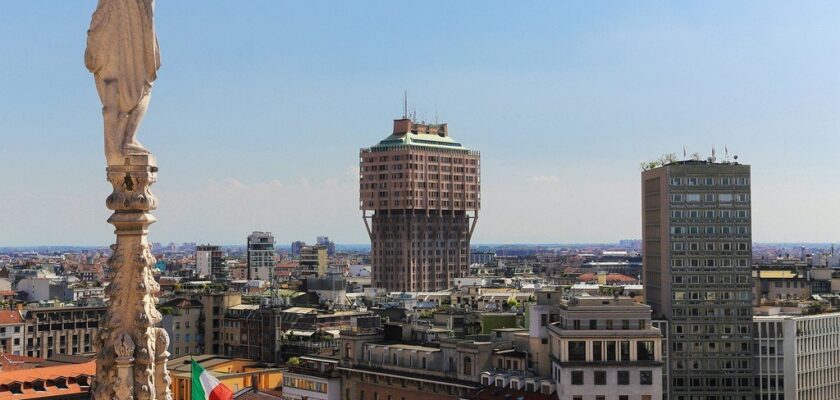Milan Cathedral Duomo di Milano
Milan’s Duomo Cathedral is the second largest cathedral after St. Peter’s in Rome and can accommodate up to 40,000 people. It is located in the historic center of Milan in the cathedral square. The cathedral is 148 meters long, 89 meters wide, the height inside is up to 68 meters. On the sides of the central and side aisles are powerful columns. About three thousand four hundred figures crown the spires of the cathedral and decorate the facade. On the central spire above them rises a shining gilded statue of the Madonna (4 m), called “La Madonina.”
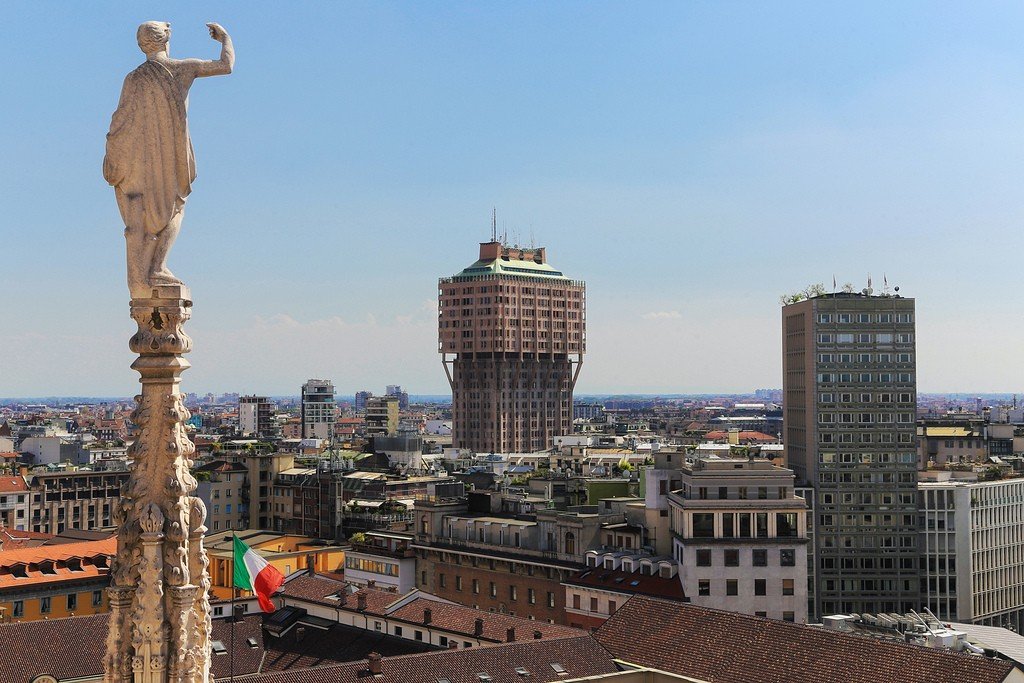
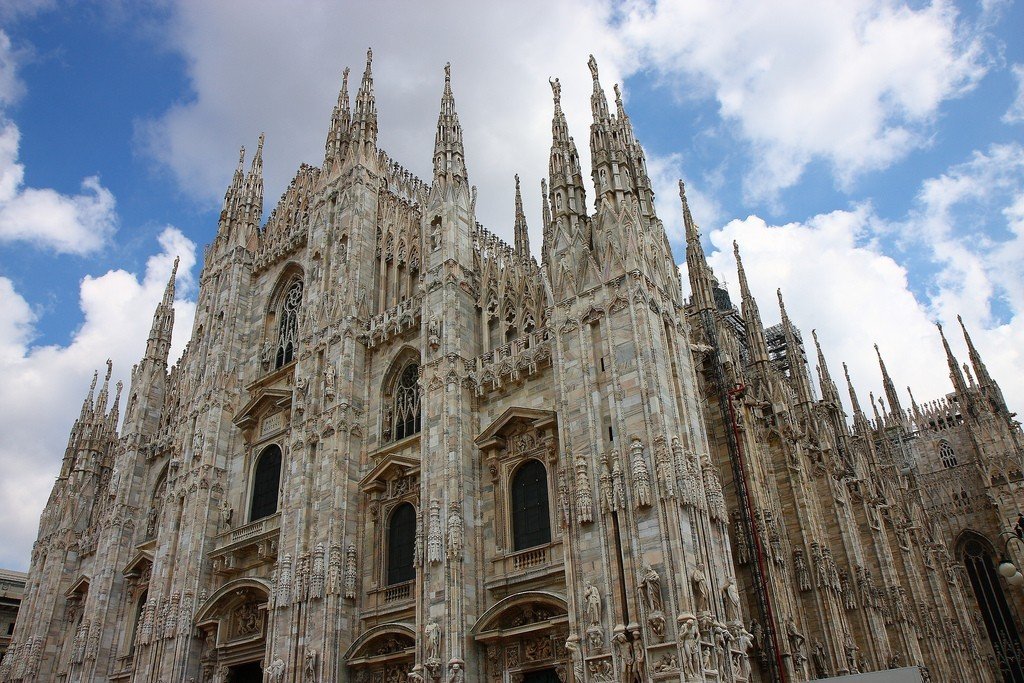
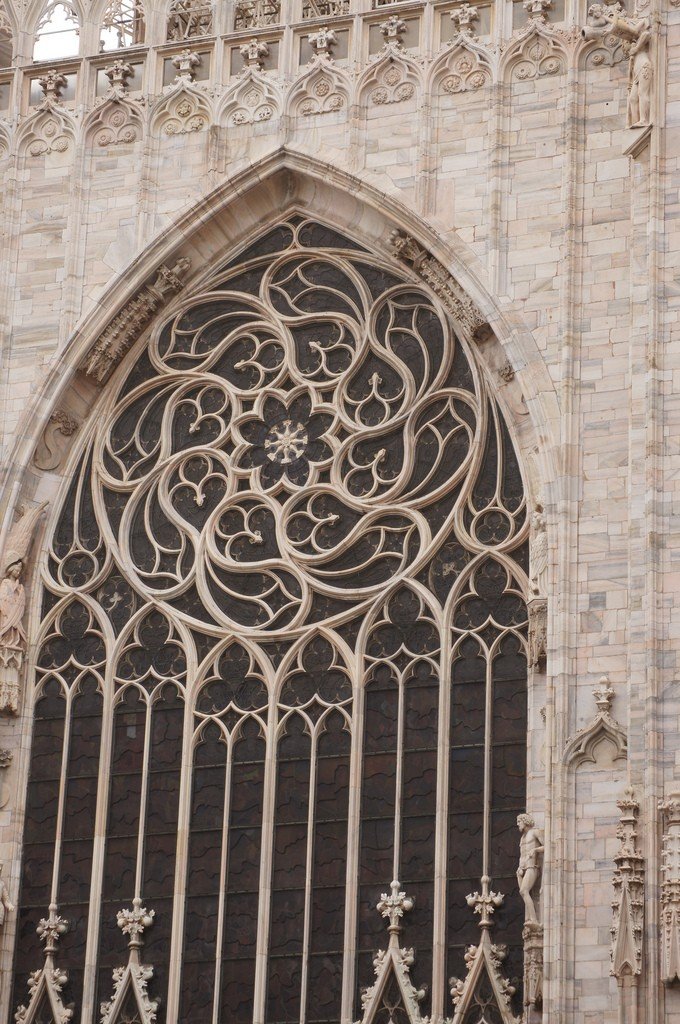
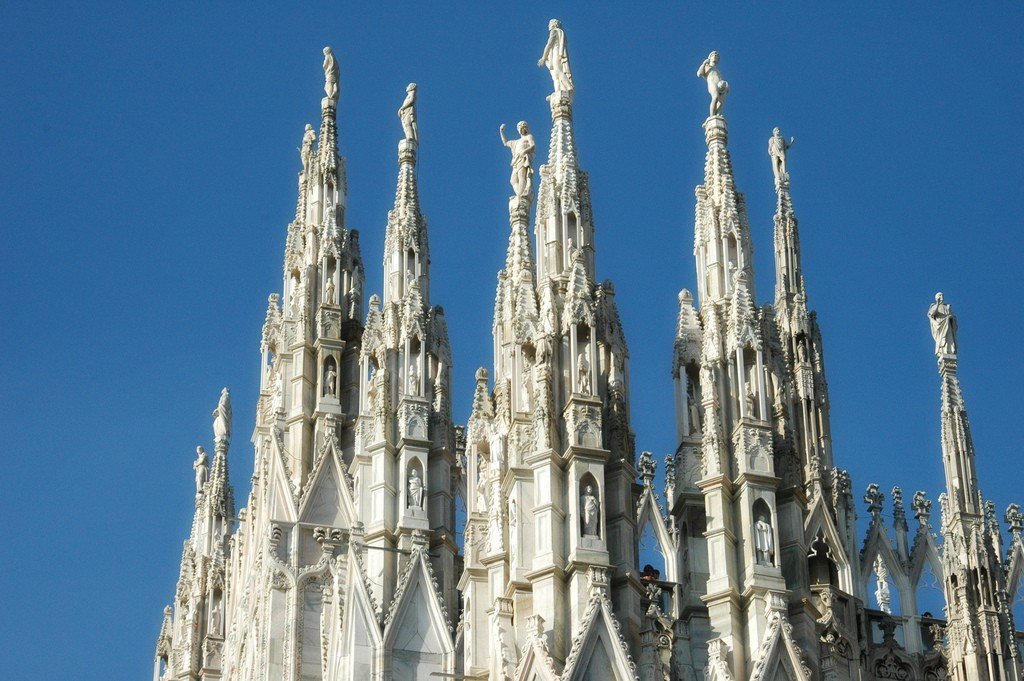
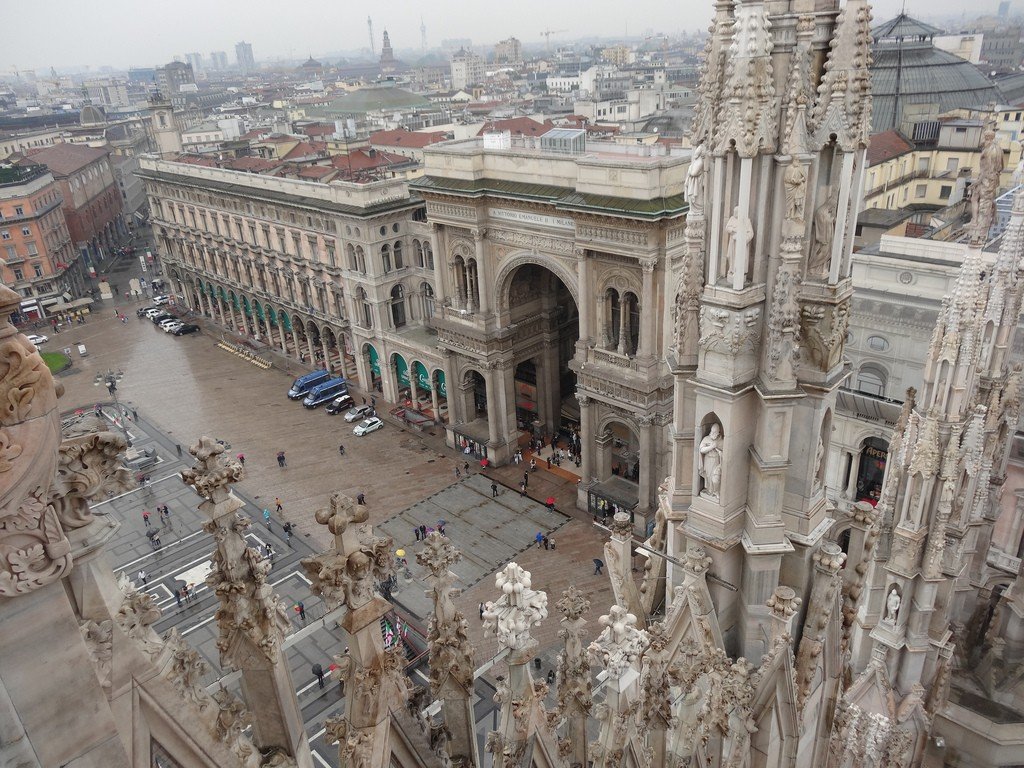
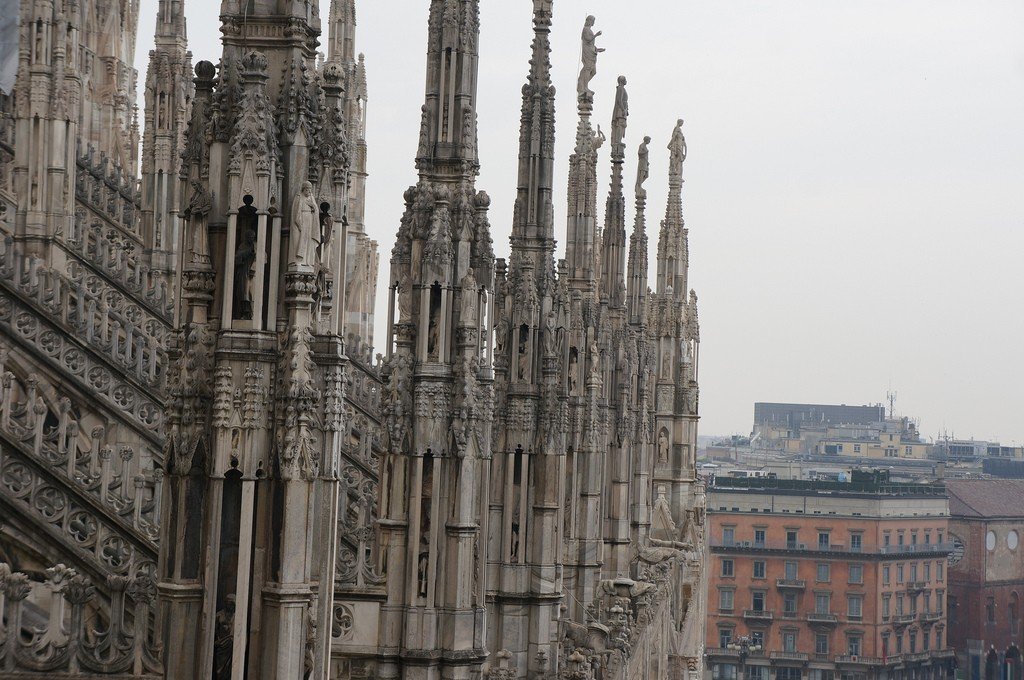
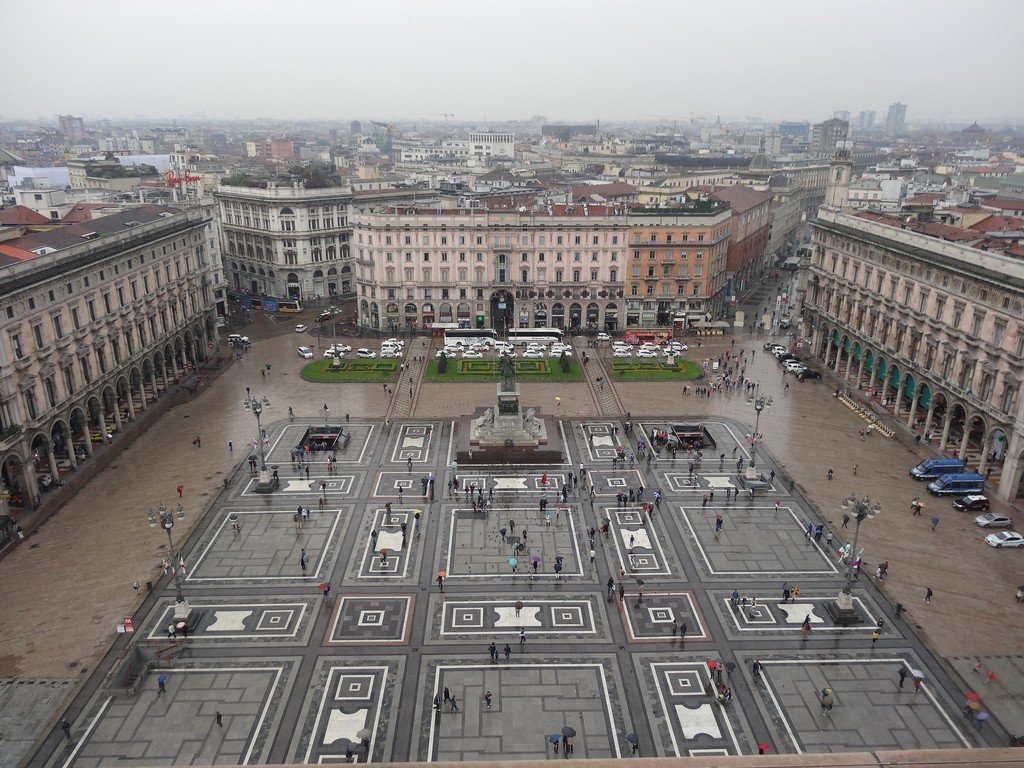
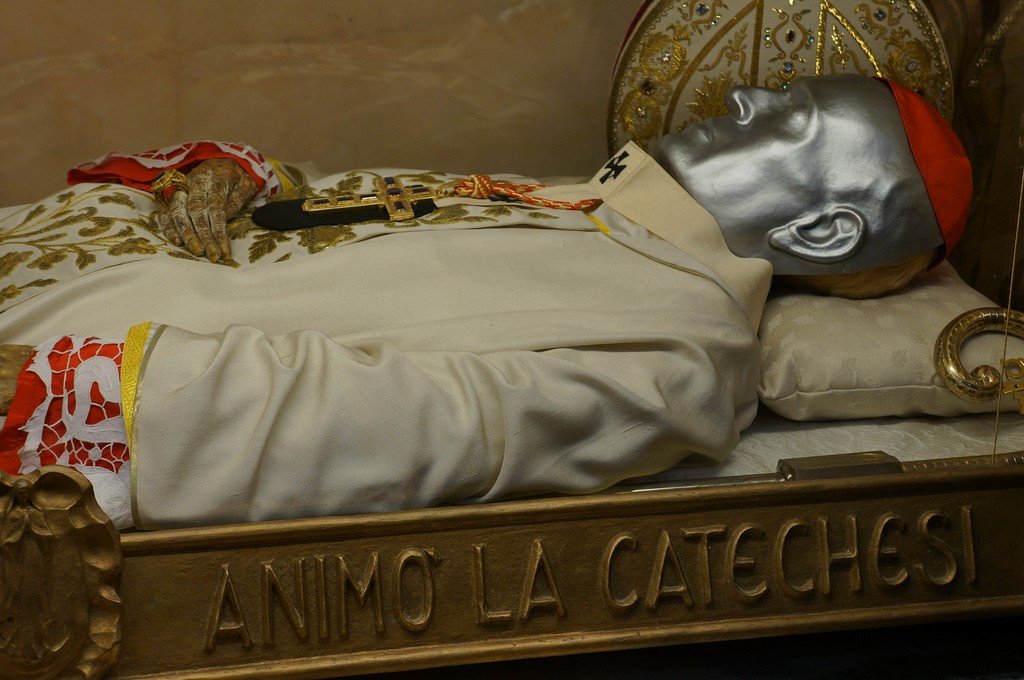
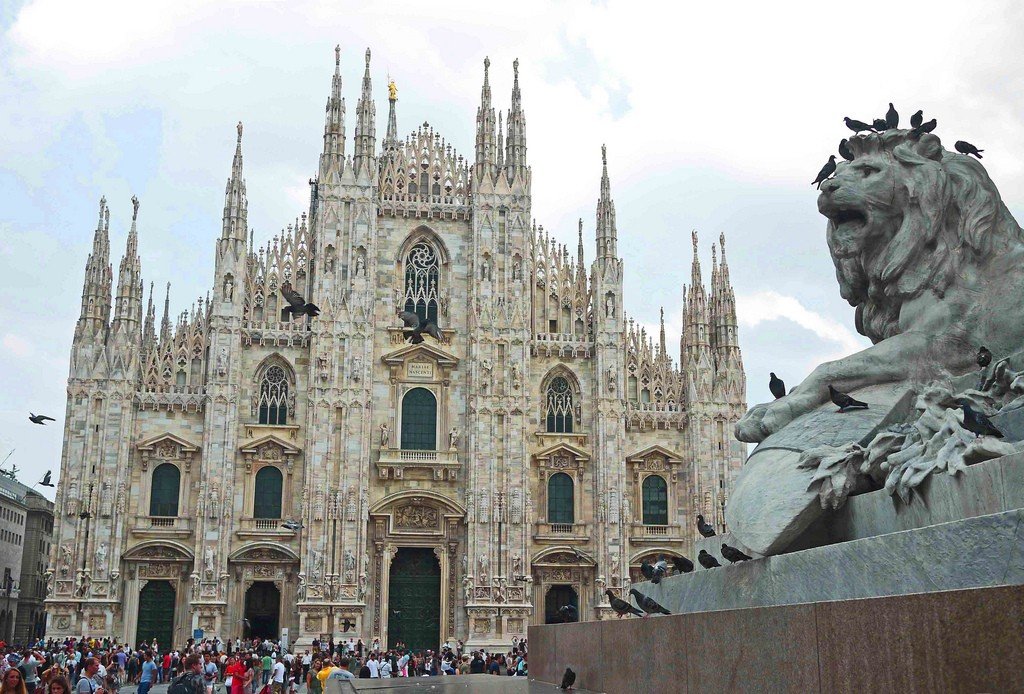
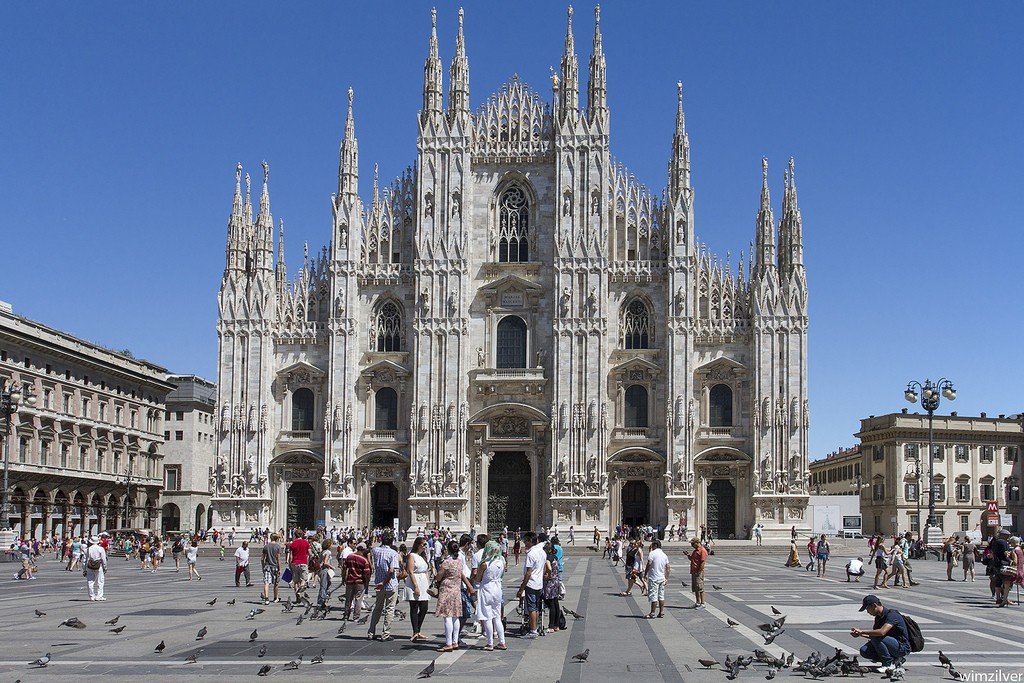
General information
Opening hours:Daily. 9.30-12.30, 15.00-18.00
The construction history of the Duomo Cathedral lasted centuries: in 1386 it began to be built in the Gothic style, and only in 1572 it was consecrated. The lower part of the five-part façade was built according to an earlier design by Pellegrini in the 17th century, while the upper parts and decoration were mostly created in the 19th and 20th centuries. – Neo-Gothic style. The bronze gate of the main entrance is also relatively recent; of interest is the main portal, added around 1900. Lodovico Poliago in Neo-Gothic and Art Nouveau style.
>Cathedral inside
The interior of the Duomo Cathedral is truly immense, with huge windows made mostly in the mid-19th century, but some 19th-century stained glass windows are also well preserved, especially in the north transverse nave. The windows on the choir were added in 1402, with openwork ornamentation by Nicholas de Bonaventure. In the oldest eastern part of the cathedral are two of the earliest Gothic portals: in the northern sacristy the Jesus Christ Gate (1389), in the southern one the Virgin Mary Gate (1391). The decoration of the cathedral dates mainly to the 16th century, one of its authors being Pellegrino Tibaldi. He designed the crypt of San Carlo (Cripta di S. Carlo) under the choirs, where the holy relics of Carlo Borromeo are kept. Under the choirs are also the treasures of the cathedral, among them a late Romanesque cross for the procession from the monastery of Chiaravalle. In the side aisles you can see the tombs of famous people: in the southern part of the transverse nave in the wall is the tomb of Gian Giacomo Medici by Leone Leoni (1563). In the northern part of the same nave, a seven-branched Romanesque bronze candelabrum, created in the 13th century in Lorraine or in the Lower Rhine-Maas region, is of interest. A staircase next to the main gate leads to the excavations under the cathedral square – here originally stood the 5th-century Basilica of St. Thecla and the Baptistery of San Giovanni alle Fonti.
.Don’t miss the opportunity to go up to the observation terraces on the roof of Milan Cathedral, especially since the cathedral has an elevator.
.Cathedral Museum
Opposite the cathedral stands the Palazzo Reale, built in 1772 and designed by Giuseppe Piermarini. The palazzo houses the Cathedral Museum (Museo del Duomo), where you can learn about the history of the construction, view architectural details and sacred works of art, such as Aribert’s Cross of 1040.
The palazzo also displays a collection of contemporary art (Museo d’Arte Contemporanea).>